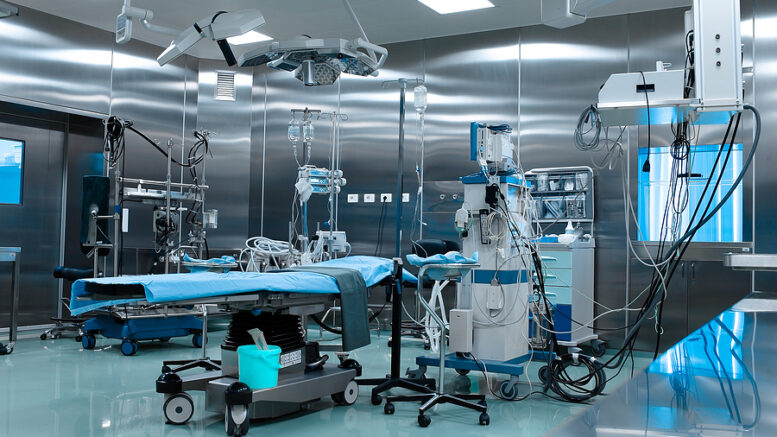Hospitals and surgery centers operate in a complex environment where delivering exceptional patient care must be balanced with stringent financial constraints. A crucial factor impacting both, which is often overlooked, is the effective management of capital equipment lifecycle data. These facilities rely on a vast and intricate network of technology, ranging from advanced imaging systems and surgical robots to essential patient monitors and infusion pumps. However, outdated or inefficiently managed equipment can trigger a cascade of problems that negatively impact both the financial health of the institution and the safety of patients.
The Pitfalls of Traditional Equipment Management
Many healthcare facilities still rely on outdated, manual methods for tracking and managing their capital equipment. This reliance on spreadsheets, paper records, and fragmented systems can create a number of significant challenges:
- Reactive Maintenance: Without a centralized system for proactive maintenance, equipment is often only addressed when it breaks down. This reactive approach leads to costly emergency repairs, disruptions to workflows, and potential delays in patient care. Imagine a critical piece of imaging equipment failing mid-diagnosis, forcing rescheduling and potentially compromising patient outcomes.
- Compromised Patient Safety: Aging equipment can pose significant safety risks. Malfunctioning devices can lead to inaccurate diagnoses, treatment delays, and even medical errors. Manually tracking safety inspections and preventative maintenance across a wide range of equipment is inefficient and prone to human error, increasing the likelihood of overlooked maintenance needs and potential safety hazards.
- Missed Financial Opportunities: Hospitals may be missing out on substantial cost savings by not optimizing their equipment’s lifecycle. This includes failing to identify redundant equipment, neglecting to explore trade-in options for older models, or missing out on valuable tax benefits associated with depreciation. Without a comprehensive overview of their equipment inventory, hospitals may be losing valuable financial resources.
- Inefficient Resource Allocation: Without a clear picture of equipment usage patterns, hospitals may be over- or under-utilizing certain devices. This can lead to unnecessary purchases of redundant equipment, increased storage costs, and inefficient scheduling that impacts patient flow and operating room utilization.
- Compliance Risks: Healthcare facilities must adhere to strict regulatory requirements regarding equipment maintenance and safety. Manually tracking compliance-related data is time-consuming, prone to errors, and makes it difficult to demonstrate adherence to these regulations during audits. This increases the risk of non-compliance, potentially leading to hefty fines and damage to the institution’s reputation.
Transforming Equipment Management with Technology
Modern technology solutions offer a powerful antidote to these challenges, providing the tools to transform equipment lifecycle management. Here’s how these solutions can bridge the gaps and optimize efficiency:
- Proactive and Predictive Maintenance: Sophisticated software allows for automated preventative maintenance scheduling, reducing downtime and extending the life of equipment. Real-time alerts ensure timely service and prevent costly breakdowns. Advanced systems can even leverage data analysis and machine learning to predict potential equipment failures before they occur, allowing for proactive intervention and minimizing disruption to patient care.
- Optimized Utilization: By tracking usage data across the facility, technology can help identify underutilized equipment that can be repurposed to other departments or sold to recoup costs. This data-driven approach optimizes resource allocation, avoids unnecessary purchases, and ensures that equipment is being used to its full potential.
- Streamlined Compliance: Automated systems help healthcare facilities meet regulatory requirements by simplifying documentation and providing audit trails for all equipment-related activities. This reduces the risk of errors, ensures compliance with industry standards, and facilitates a smooth and successful audit process.
- Data-Driven Decision Making: Advanced analytics provide valuable insights into equipment performance, maintenance costs, and utilization trends. This data empowers informed decision-making regarding equipment replacement, upgrades, and future investments. By having a clear understanding of the total cost of ownership and the return on investment for each piece of equipment, hospitals can make strategic decisions that optimize their capital expenditures.
- Cost Reduction: By optimizing equipment lifecycles, technology solutions help hospitals reduce maintenance expenses, avoid unnecessary purchases, and maximize the value of their capital assets. This translates into significant cost savings that can be reinvested in patient care, facility improvements, or other strategic initiatives.
Beyond Cost Savings: Enhancing Patient Care
While cost savings are a significant benefit, technology-driven equipment management also contributes to improved patient safety and satisfaction. By ensuring that equipment is well-maintained, functioning optimally, and readily available, hospitals can provide a higher quality of care and reduce the risk of adverse events. This creates a safer and more positive experience for patients, ultimately enhancing their trust and satisfaction.
In conclusion, effectively managing capital equipment lifecycle data is paramount for hospitals and surgery centers striving for financial sustainability and optimal patient care. By embracing modern technology solutions, healthcare facilities can overcome the challenges of traditional equipment management, unlock significant savings, and enhance the quality of care they provide. This investment in technology is an investment in the future of healthcare, enabling institutions to deliver the best possible care to their patients while ensuring their own financial health and sustainability.
Article By:
Grant Luke, Strategic Account Manager, CapExpert
Husband to a surgery center nurse and father of three girls, Grant started in medical device sales before moving to ASC scheduling software, Casetabs, after seeing his wife use the app at her surgery center. Grant then served as the Facility IT Project Manager at SCA Health, with a specialization in EHR evaluation and implementation. From there he worked as the Director of ASC Applications at USPI, serving the 520+ surgery centers and surgical hospitals in their portfolio.
Today, Grant is back in Business Development working for CapExpert, an AI-assisted capital equipment lifecycle management platform. He enjoys problem-solving with his customers, and more importantly, seeing them be successful in achieving their goals and initiatives.
When he’s not working, you can find him playing in the backyard with his girls, or driving an ATV on their land in NE Texas.
Articles you may like:




